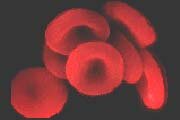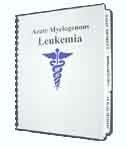 |
||
| HOME | ||
 |
||
| Acute Myelogenous Leukemia (AML) |
||
 |
||
| Other Leukemia Types (ALL / CLL / CML / HCL) |
||
 |
||
| Myelodysplastic Syndrome | ||
 |
||
| Symptoms and Diagnosis | ||
 |
||
| Leukemia Treatment Options | ||
 |
||
| " Chemotherapy | ||
 |
||
| " Blood Stem Cell Transplants | ||
 |
||
| " Radiation and Surgery | ||
 |
||
| " Chemo Side Effects | ||
 |
||
| " Clinical Trials Info | ||
 |
||
| " Coping with Leukemia | ||
 |
||
| " What to Ask Your Doctor | ||
 |
||
| Financial Assistance | ||
 |
||
| At Risk Jobs/Exposure | ||
 |
||
| Leukemia Resources | ||
 |
||
| Survivor's Story | ||
 |
||
| Leukemia News | ||
 |
||
|
Search for information:
|
||

|
Leukemia Cancer News - Return to Menu Novantrone, cardiotoxicity and secondary acute myelogenous leukemia Serono sent to healthcare professionals a supplement information concerning the risks of cardiotoxicity associated with Novantrone ( Mitoxantrone for injection concentrate ) treatment for multiple sclerosis ( MS ) and also provides supplemental information regarding secondary acute myelogenous leukemia ( AML ) reported in multiple sclerosis patients treated with Novantrone. Reports received through post-marketing surveillance, have shown that diminished cardiac function may occur early on in the treatment with Novantrone. Therefore, the Product Labeling for Novantrone was updated in March 2005 to state that cardiac monitoring of MS patients should be performed at baseline and prior to administration of every dose of Novantrone. Novantrone is indicated for reducing neurologic disability and/or the frequency of clinical relapses in patients with secondary ( chronic ) progressive, progressive relapsing, or worsening relapsing-remitting multiple sclerosis ( i.e., patients whose neurologic status is significantly abnormal between relapses ). Novantrone is not indicated in the treatment of patients with primary progressive multiple sclerosis. Use of Novantrone has been associated with cardiotoxicity. Cardiotoxicity can occur at any time during Novantrone therapy, and the risk increases with cumulative dose. Congestive heart failure ( CHF ), potentially fatal, may occur either during therapy with Novantrone or months to years after termination of therapy. All patients should be carefully assessed for cardiac signs and symptoms by history and physical examination prior to start of Novantrone therapy. Baseline evaluation of left ventricular ejection fraction ( LVEF ) by echocardiogram or multi-gated radionuclide angiography ( MUGA ) should be performed. Multiple sclerosis patients with a baseline LVEF <50% should not be treated with Novantrone. LVEF should be reevaluated by echocardiogram or MUGA prior to each dose administered to patients with multiple sclerosis. Additional doses of Novantrone should not be administered to multiple sclerosis patients who have experienced either a drop in LVEF to below 50% or a clinically significant reduction in LVEF during Novantrone therapy. Patients with multiple sclerosis should not receive a cumulative dose greater than 140mg/m2. In cancer patients, the risk of symptomatic congestive heart failure ( CHF ) was estimated to be 2.6% for patients receiving up to a cumulative dose of 140mg/m2. Presence or history of cardiovascular disease, prior or concomitant radiotherapy to the mediastinal / pericardial area, previous therapy with other anthracyclines or anthracenediones, or concomitant use of other cardiotoxic drugs may increase the risk of cardiac toxicity. Cardiac toxicity with Novantrone may occur whether or not cardiac risk factors are present. Secondary acute myelogenous leukemia ( AML ) has been reported in multiple sclerosis and cancer patients treated with Mitoxantrone. In a cohort of Mitoxantrone treated MS patients followed for varying periods of time, an elevated leukemia risk of 0.25% ( 2/802 ) has been observed. postmarketing cases of secondary AML have also been reported. In 1774 patients with breast cancer who received Novantrone concomitantly with other cytotoxic agents and radiotherapy, the cumulative risk of developing treatment-related AML, was estimated as 1.1% and 1.6% at 5 and 10 years, respectively. Secondary acute myelogeneous leukemia ( AML ) has been reported in cancer patients treated with anthracyclines. Novantrone is an anthracenedione, a related drug. The occurrence of refractory secondary leukemia is more common when anthracyclines are given in combination with DNA-damaging antineoplastic agents, when patients have been heavily pretreated with cytotoxic drugs, or when doses of anthracyclines have been escalated. Cases of secondary AML in multiple sclerosis patients treated with Novantrone have been reported in peer-reviewed literature, through the collection of spontaneous reports, and in a prospective observational study. Because the number of multiple sclerosis patients exposed to Novantrone in post-marketing is unknown and because spontaneous reporting of adverse events can be subject to under-reporting, it is not possible to determine incidenceor relative risk to an MS patientof developing secondary AML. Effects in Worsening MS ( RENEW ) is an ongoing 5-year, post-marketing, observational study involving a cohort of 505 patients with worsening relapsing-remitting, secondary progressive, or progressive-relapsing MS. Since initiation of patient enrollment in April 2001, there has been one case of secondary AML reported, involving a 52-year-old female with secondary progressive multiple sclerosis. She had received a cumulative total of 72 mg/m2 of Novantrone, in six infusions given from August 2001 to December 2002, when she was noted to be neutropenic, at which time her treatment with Novantrone was stopped. In May 2004, she was noted to have peripheral blasts and bone marrow biopsy confirmed AML. This patient had no other known risk factors for leukemia and no concomitant potentially cytotoxic drugs were listed. Her AML was considered probably related to Novantrone. Since treatment with Idarubicin and Ara-C, she has been in remission. Based on this case, the incidence rate in this study is increased as compared to a non-exposed matched population. Because of the risk of secondary AML, strict adherence to existing blood cell count monitoring recommendations for patients being treated with Novantrone for MS should be followed with complete blood counts, including platelets, prior to each course of Novantrone and in the event that signs or symptoms of infection develop. Novantrone generally should not be administered to MS patients with neutrophil counts less than 1500 cells/mm3. Also, regular blood cell counts should be monitored after discontinuation of Novantrone therapy. Source: FDA, 2005 XagenaMedicine2005 ChemGenex Announces Strategy for Registration-Directed Clinical Trials for Ceflatonin(R) 7/17/2005 - ChemGenex Pharmaceuticals Limited (ASX:CXS) (NASDAQ:CXSP), based in Melbourne, Australia and Menlo Park, Ca, USA, today announced its accelerated clinical development plan for its lead anti-cancer therapeutic, Ceflatonin(R) (homoharringtonine, HHT). The initiation of the first of two registration-directed Phase 2/3 trials is scheduled for the third quarter of 2005. The first trial will target chronic myeloid leukemia (CML) accelerated phase patients who are resistant to high-dose Gleevec(R). The single agent Phase 2/3 trial will initially be conducted in six leading European cancer centers, and is expected to expand to incorporate cancer centers in the U.S. in Q1, 2006. The trial incorporates the benefits of the company's recent in-licensing agreement with Stragen Pharma and builds on growing clinical evidence that Ceflatonin(R) has significant potential as a treatment for CML patients who are resistant to Gleevec(R) and other experimental bcr-abl kinase inhibitors. It is anticipated that the enrollment in this trial of up to 85 patients will be completed in Q4, 2006. A second single agent Phase 2/3 clinical trial with Ceflatonin(R) to treat CML patients with a specific gene mutation that makes them resistant to tyrosine kinase inhibitors such as Gleevec(R) (the T315I bcr-abl mutation) is planned to commence in the U.S. and Europe in Q1, 2006, and will recruit up to 85 patients. This study will be initiated based on evidence from recent Phase 1/2 studies that HHT has activity in CML patients who have developed bcr-abl point mutations associated with tyrosine kinase inhibitor resistance. ChemGenex has ongoing Phase 2 clinical trials under its U.S. IND at the M.D. Anderson Cancer Center in Houston, Texas (Ceflatonin(R) in combination with Gleevec(R) in CML and Ceflatonin(R) as a single agent in myelodysplastic syndrome (MDS)). "This is a major advance in our clinical development of Ceflatonin(R)," said Dr. Greg Collier, chief executive officer and managing director of ChemGenex Pharmaceuticals. "The new trial designs offer considerable advantages; we have developed protocols for the sub-cutaneous, rather than intravenous dosing of patients and we have new data demonstrating synergy when used in-combination with Gleevec(R). As the number of CML patients developing bcr-abl point mutations associated with resistance to tyrosine kinase inhibitors such as Gleevec(R) increases, there will be considerable need for treatments such as Ceflatonin(R) that combat the disease via a different mechanism." ChemGenex has updated its company overview presentation to include the new clinical strategy for Ceflatonin(R). The presentation can be accessed from the company's home page (www.chemgenex.com). About ChemGenex Pharmaceuticals Limited (www.chemgenex.com) ChemGenex Pharmaceuticals is a gene-based pharmaceutical company dedicated to improving the lives of patients by developing therapeutics in the areas of oncology, diabetes, obesity, and depression. ChemGenex currently has two compounds in Phase 2 clinical trials, Ceflatonin(R) for leukemia and Quinamed(R) for solid tumors, and has a significant portfolio of anti-cancer, diabetes, obesity and depression programs. The company's diabetes and obesity program is partnered with Merck KGaA and the depression program is partnered with Vernalis plc. ChemGenex currently trades on the Australian Stock Exchange under the symbol "CXS" and the NASDAQ exchange under the symbol "CXSP." Safe Harbor Statement Certain statements made herein that use the words "estimate," "project," "intend," "expect," "believe," and similar expressions are intended to identify forward-looking statements within the meaning of the US Private Securities Litigation Reform Act of 1995. These forward-looking statements involve known and unknown risks and uncertainties which could cause the actual results, performance or achievements of the company to be materially different from those which may be expressed or implied by such statements, including, among others, risks or uncertainties associated with the development of the company's technology, the ability to successfully market products in the clinical pipeline, the ability to advance promising therapeutics through clinical trials, the ability to establish our fully integrated technologies, the ability to enter into additional collaborations and strategic alliances and expand current collaborations and obtain milestone payments, the suitability of internally discovered genes for drug development, the ability of the company to meet its financial requirements, the ability of the company to protect its proprietary technology, potential limitations on the company's technology, the market for the company's products, government regulation in Australia and the United States, changes in tax and other laws, changes in competition and the loss of key personnel. These statements are based on our management's current expectations and are subject to a number of uncertainties that could change the results described in the forward-looking statements. Investors should be aware that there are no assurances that results will not differ from those projected. CONTACT:
|
|
|


